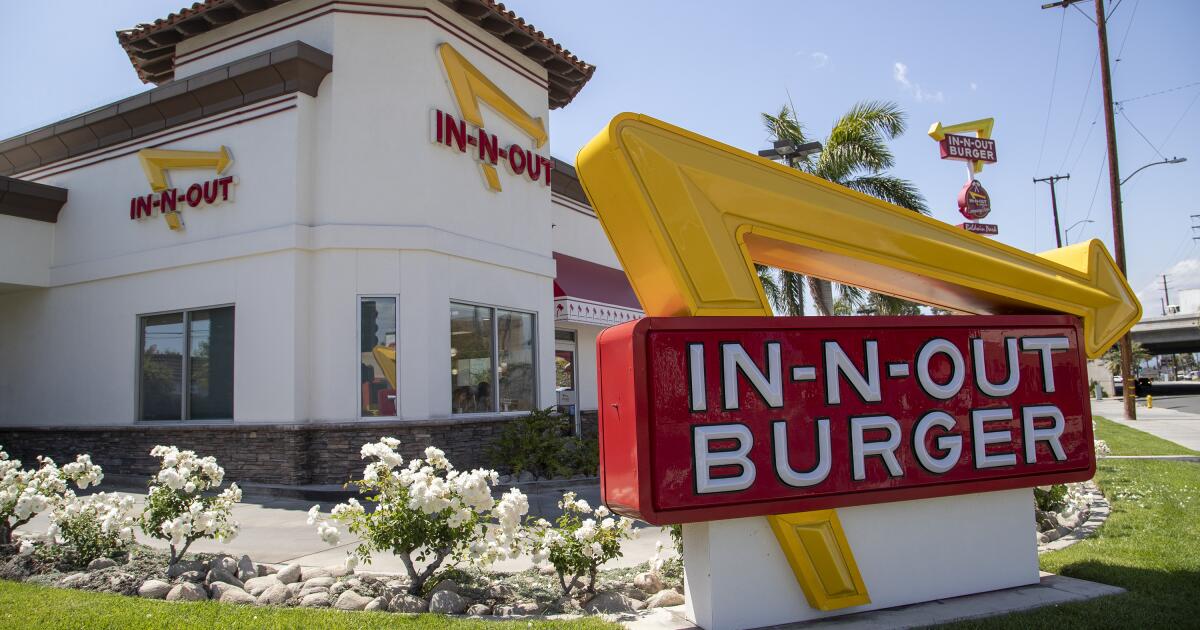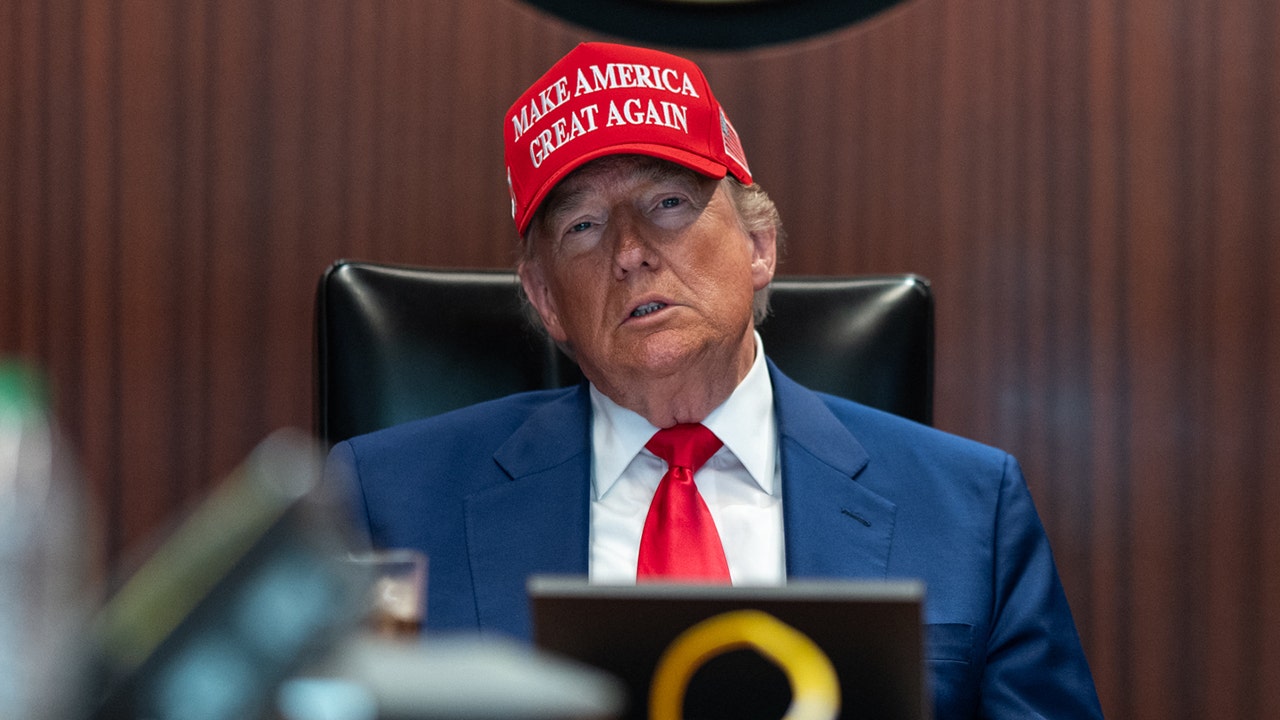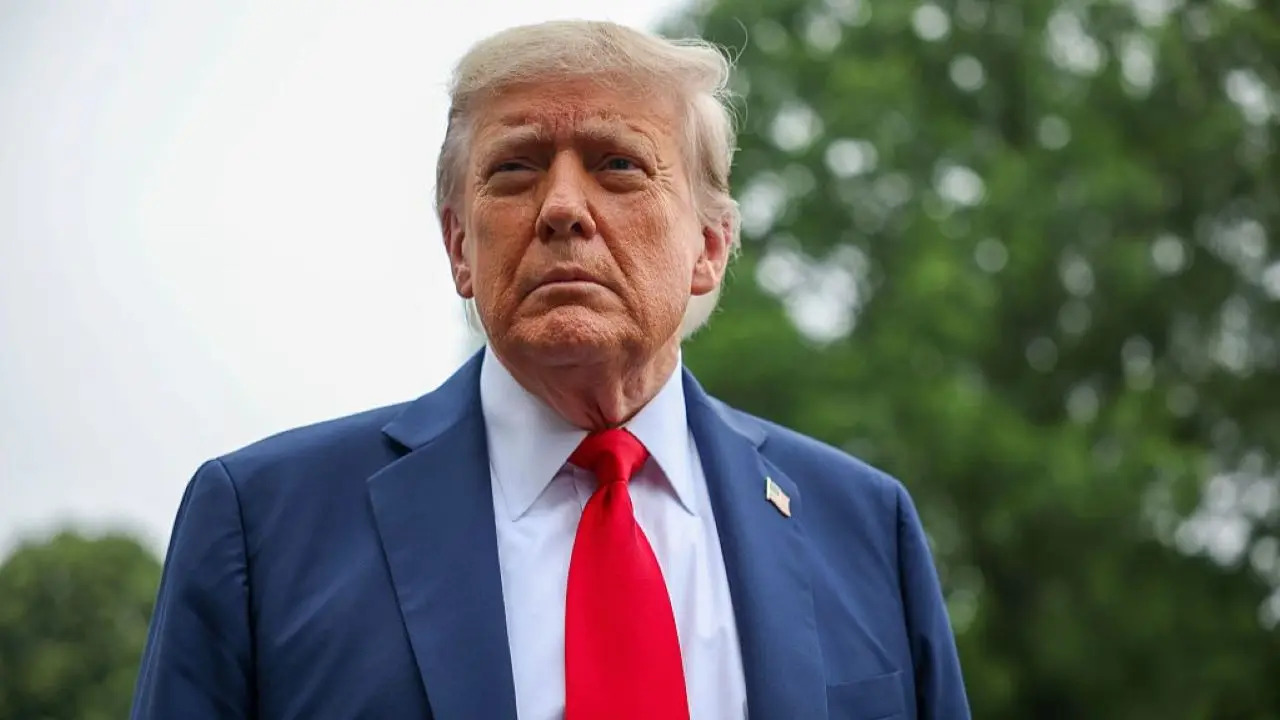Business
Could Jeff Zucker Fix CNN? He Seems to Think So.

The seminar was to be on media leadership. Dozens of students filling a classroom at Yale University in April were there to learn about the business from a man who had commanded attention in TV control rooms and corporate boardrooms for decades before a stunning exit last year.
What they got was remarkable candor about that exit.
Jeff Zucker, who had been president of CNN for nine years, told the group that he believed the network’s former owners used his relationship with Allison Gollust — who was also in attendance — as a pretext for removing him, three people familiar with his comments said.
In front of the students — where other high-profile media executives, including Bob Iger of Disney, were scheduled to speak the same day — Mr. Zucker compared his failure to disclose his relationship with Ms. Gollust, CNN’s former communications chief, to handing over a dangerous weapon.
“I gave them a gun, and they shot me with it,” Mr. Zucker said, according to the people.
That Mr. Zucker would compare his forced departure to a gunshot wound underscores the depth of his frustration with his last days at a network he controlled with exacting detail for years.
The complaint wasn’t unusual for Mr. Zucker, 58. He often compares notes on the media business with former colleagues and industry acquaintances, many of whom call him to grouse about the current state of CNN.
But his gripes have become more frequent of late, and he has made no secret of his unhappiness with the terms of his exit from CNN or his low regard for the performance of its current leader, Chris Licht. In a sense, he is now serving as a kind of grievance switchboard for current and former employees of the news network, many people who have spoken with him said.
Mr. Zucker’s criticism may be painful for executives running CNN to hear second- and thirdhand. But also painful are the numbers: The news division, which once regularly made more than $1 billion in profit annually, generated just $750 million in profit last year. And its ratings were down more than 30 percent in the first quarter of this year compared with the same point in the 2020 presidential election cycle, when Donald J. Trump — a major driver of cable news viewership — was still in the White House, according to Nielsen data.
As it has geared up to cover the 2024 campaign, the network has committed some unforced errors. Last month, CNN hosted a town hall with Mr. Trump in New Hampshire that was criticized for airing false information. Mr. Licht’s leadership and problems at the helm of the network were dissected at length in a 15,000-word Atlantic article that was published Friday.
Many anchors Mr. Zucker hired or promoted, including Jake Tapper, and Kaitlan Collins, who moderated the town hall, are still in prominent spots in CNN’s lineup. But he has found himself banished from the control room during a major news cycle, including an indictment of former President Trump and the opening acts of the 2024 presidential election.
He has not been hiding away, though. He and Ms. Gollust traveled to Las Vegas to see a Taylor Swift concert, and last month he attended the Sports Emmy Awards at the invitation of Bryant Gumbel, along with the former “Today” anchor Matt Lauer. His new office in Manhattan — where a life-size statue of the Incredible Hulk looms in the entryway — is just blocks from CNN’s former New York headquarters in Columbus Circle.
And he is trying to get his next act off the ground, starting a new venture called RedBird IMI with $1 billion to spend on acquisitions in the digital media, sports, entertainment and news industries.
This article on Mr. Zucker is based on interviews with more than four dozen of his associates in the media industry who spoke on condition of anonymity to avoid jeopardizing their relationship with him. He declined to comment, but through a spokeswoman described his attitude toward CNN.
“It is wholly unsurprising that Jeff Zucker, the architect of CNN’s unprecedented success, would have deep misgivings about the direction the network has taken since he left,” said Risa Heller, a spokeswoman for Mr. Zucker. She added that it was also no surprise “that he gets asked a lot, publicly and privately, and regularly from former colleagues, about what he thinks of CNN now.”
Months after he left CNN in February 2022, Mr. Zucker met with his successor, Mr. Licht. The organizers of that meeting — industry confederates who know both men — hoped that a lunch at Mr. Zucker’s house on Amagansett’s tony Hedges Lane would clear the air.
Mr. Zucker had been privately critical of Mr. Licht’s leadership of CNN, according to people who have spoken with him, and the two men hadn’t met since Mr. Zucker was pushed out.
The get-together didn’t kindle much bonhomie between the media executives, who had been friendly in the clubby world of TV news. Mr. Licht was seeking a rapprochement. Mr. Zucker was asked to give advice. But afterward, the former CNN president griped that Mr. Licht didn’t take any of his pointers, said a person familiar with his feelings following the meal.
“This is all very sad for Jeff,” said Kenneth Lerer, the co-founder of HuffPost and former chairman of BuzzFeed. “He should move on with his life. It’s disheartening to see.”
Mr. Lerer has a distinct perspective on the situation: He is a close friend of David Zaslav, the chief executive of CNN owner Warner Bros. Discovery, and was once also friendly with Mr. Zucker.
Mr. Zucker’s criticism has rankled executives of Warner Bros. Discovery, which owns CNN, according to people familiar with their thinking. They suspect Mr. Zucker has leaked unflattering information about the network’s operations to the press.
He has also been candid about what he sees as the missteps of CNN’s former parent company, AT&T, and its leaders, including the former WarnerMedia chief executive Jason Kilar, many industry acquaintances who have spoken with Mr. Zucker in recent months say.
Executives at Warner Bros. Discovery believe Mr. Zucker is waging a proxy war against Mr. Licht, undermining his leadership from afar, according to three people familiar with their thinking.
Mr. Zucker’s criticisms have come at a particularly inopportune time for Warner Bros. Discovery, which was created last year from the fusion of WarnerMedia, CNN’s parent company at the time, and Discovery, the home of “Dr. Pimple Popper” and “90 Day Fiancé” and is still trying to get CNN onto solid footing.
A spokesman for Warner Bros. Discovery said in a statement that the company was confident in the direction of the network and in Mr. Licht’s leadership of it. “We set a high bar for ourselves and while we know that it will take time to complete the important work that’s underway, we have great confidence in the progress that Chris and the team are making and share their conviction in the strategy,” the statement said.
Underlying the grievances are tensions between Mr. Zucker and Mr. Zaslav, who picked Mr. Licht to succeed Mr. Zucker at the top of CNN. Once great friends and business allies — and a regular pair at the East Hampton Golf Club — the two men have grown apart since Mr. Zucker’s ouster, people familiar with their relationship say.
In March, Mr. Zaslav visited CNN’s Manhattan headquarters and criticized Mr. Zucker’s leadership of the network in a meeting with Mr. Licht’s lieutenants, according to someone at Warner Bros. Discovery. In the meeting, Mr. Zaslav told CNN executives that Mr. Zucker’s gripes — which had made their way to him — were ironic, given that Mr. Zucker had once remarked that Mr. Licht was the one executive who could do the job if he ever left the network.
Since he took over CNN’s parent company, Mr. Zaslav has fired back, telling employees in a private meeting that there was a “period of time” when it became an “advocacy network,” a not-so-subtle dig at segments that were stridently critical of President Trump, who drove massive ratings. Mr. Zucker disagrees with that characterization, people who have spoken with him say, believing that on his watch the network’s policy of calling out Mr. Trump’s falsehoods led to journalistic and financial success.
In another gathering this spring, Mr. Zucker said that his departure from CNN was the hardest period in his life, adding that the episode made his bond with Ms. Gollust stronger, according to a person familiar with his remarks. He also said that the punishment he received didn’t fit the crime.
When Mr. Zucker was forced out of CNN last year, he and the network’s parent company negotiated over a statement designating his failure to disclose his relationship with Ms. Gollust as the reason for his exit. “I was required to disclose it when it began but I didn’t. I was wrong,” Mr. Zucker wrote in a memo to employees at the time.
According to two people familiar with Mr. Zucker’s departure from CNN, a company investigation into his conduct by the law firm Cravath, Swaine and Moore found multiple violations of CNN’s standards and practices, including taking part in advising former New York Gov. Andrew M. Cuomo.
Ms. Heller, Mr. Zucker’s spokeswoman, said Mr. Zucker did not advise Mr. Cuomo.
“As we have said numerous times, Mr. Zucker never advised Andrew Cuomo, directly or indirectly,” she said. “He was asked to resign for one reason only, failure to disclose his relationship.”
For Mr. Zucker, who has been in senior management ranks since his 20s, when he became executive producer of “Today,” his abrupt exit from CNN represented a marked change of pace. He soon began to explore his options, gravitating to the familiar territories of sports and media. Years ago, Mr. Zucker told a writer for the Harvard Crimson, the campus newspaper he worked on as an undergraduate, that he hadn’t taken a day off since finishing college.
Shortly after his ouster from CNN, Mr. Zucker began plotting his next move, meeting with advisers, former colleagues and industry stalwarts at upscale watering holes like the Core Club in New York and the Four Seasons in Los Angeles. But even as he planned for the future, Mr. Zucker was thinking about his past.
In the summer, he traveled to Jackson Hole, in Wyoming, for an off-the-record gathering of media executives. In a fireside chat at the event, he was asked for his view on the current direction of CNN and in his answer criticized Mr. Kilar for the way the executive handled his exit, according to two people familiar with his remarks.
In his new endeavor, the investment vehicle Redbird IMI, he has told confidants he is interested in building a company that owns digital publications targeted at specific audiences, similar to Condé Nast, publisher of Vogue and The New Yorker. He has held talks with owners of digital-media start-ups, but those conversations haven’t yet resulted in a deal. He is now one of at least three suitors exploring a deal to take a majority stake in Air Mail, the media company founded by the former Vanity Fair editor Graydon Carter.
In recent months, he has also met with Jeff Bezos, the Amazon founder and owner of The Washington Post, according to three people familiar with their conversation.
One company Mr. Zucker is not in talks to acquire is CNN, according to people familiar with his plans. Though he has told some associates he would be interested in acquiring the network should it come up for sale one day, he has lamented to others that CNN’s current owners, Warner Bros. Discovery, have damaged the network so much through cost-cutting that he wouldn’t be interested in owning it.
But Mr. Zucker has explored a deal for the network before. In late 2020, he and Andrew Morse, CNN’s former digital chief, met with Emerson Collective, the umbrella company founded by Laurene Powell Jobs, and had preliminary conversations about a potential spinout of the network. Without informing Mr. Kilar, his boss at the time, Mr. Zucker referred Emerson Collective’s interest to an executive at AT&T. The deal never happened, and AT&T ultimately turned to Discovery.
There are signs that Mr. Zucker believes he could once again be calling the shots at a media organization. He has told associates that he’s open to an operational role at one of the companies he buys, and many of his confidantes believe he could still land another big corporate job.
A professional revival for Mr. Zucker has some precedent. After he was fired as chief executive of NBCUniversal in 2010, Mr. Zucker created a new daytime show for Disney with the former “Today” host Katie Couric that he called a “tremendous opportunity.”
Then he got the CNN job. “Katie” was off the air two years later.

Business
Why the Strait of Hormuz, A Vital Oil Route, Is Vulnerable to Israel-Iran Conflict
Business
In-N-Out sues YouTuber over fake employee prank video

In-N-Out Burger has filed a lawsuit against a YouTube personality for allegedly impersonating a company employee, filming customers without their consent and posting videos sharing false and misleading information about the popular California burger chain.
The federal lawsuit, filed in Santa Ana on June 20, stems from a video Bryan Arnett posted to his YouTube channel on April 25. In the now-private video, Arnett posed as an In-N-Out employee at multiple Southern California locations while the chain’s restaurants were closed for Easter Sunday.
Wearing the restaurant’s signature uniform — a white T-shirt, red apron and paper hat — Arnett pretended to take drive-thru orders from unsuspecting customers. The video showed him offering fake menus, making inappropriate comments and asking uncomfortable personal questions.
In one clip of the video posted to TikTok, Arnett and an accomplice staged a scene where they pretended that a cockroach was found in a meal, with Arnett claiming the location was experiencing “a pretty bad cockroach problem” that week. Another clip captured him asking a customer if they would be interested in sleeping with his wife while he watched.
According to the lawsuit, Arnett also made false statements suggesting the chain served food “doggy style” and that a “manager” had put his “feet in the lettuce” served to customers.
This isn’t Arnett’s first run-in with In-N-Out management. He was previously removed from locations for trying to pay for strangers’ orders with pennies and for posting fake “employee of the month” plaques featuring his own photo in dining areas.
The content creator, who has built a following on YouTube and Instagram through videos of himself breaking social norms, recently posted a vlog showing him living inside a Planet Fitness gym to see how long he could stay before being ejected.
In-N-Out, which operates 421 locations across the United States — 283 of them in California — has consistently defended its family-oriented brand reputation. The Irvine-based (as of now) company pursued legal action against another YouTuber for similar pranks in 2018.
The chain is also known for hosting international pop-ups as a strategy to maintain its global trademarks and protect its brand identity worldwide. It has previously sued copycat restaurants in Utah, Mexico and Australia for trademark infringement.
“In-N-Out cares deeply about its customers, the goodwill those customers have for its brand, and the Associates who work tirelessly to uphold that brand by their commitment to ensuring every customer has a positive experience,” the lawsuit states.
In a YouTube video posted Monday, Arnett responded to the legal action with apparent indifference.
“It’ll probably be annoying or whatever, but whatever’s gonna happen is gonna happen,” he said. The video has since been made private.
Arnett did not immediately respond to requests for comment about the lawsuit.
Business
Commentary: Claiming a historic gain in blue-collar wage growth, Trump shows how to use statistics to mislead

You may have seen an eye-opening statement recently from the Trump White House crowing about its success in pushing up “blue-collar wage growth.”
The statement was headlined: “Blue-Collar Wage Growth Sees Largest Increase in Nearly 60 Years Under Trump.” It purported to track real wages for hourly workers during Trump’s first five months in office, and compared that figure to the first five months in office of Trump’s predecessors.
“We’re just getting started with pro-growth, pro-prosperity policies that finally put America First,” the White House boasted.
A really strong economy was handed off to the Trump administration, and so far, it has mostly held.
— Josh Bivens, Economic Policy Institute
There are enough questions about how the White House arrived at this conclusion, and why anyone should trust it, to mark it as a sterling demonstration of how to employ cherry-picking to lie with statistics.
In conjunction with the announcement, Treasury Secretary Scott Bessent gave a preening interview to the New York Post, a Trump-friendly daily that repeated the claim without examination. He also appeared on a New York Post podcast to promote the administration’s purportedly near-record-setting achievement.
Bessent didn’t disclose the administration’s methodology, or explain what the first five months of a presidential term was supposed to reveal, so I had to parse the data myself, with the crucial assistance of some professional economists. More on that in a moment.
The basis for Trump’s claim is a government statistic tracking inflation-adjusted hourly earnings for production and nonsupervisory employees in the private sector, pegged to prices in 1982-1984.
The workers tend to be rank-and-file employees, though economic analysts Philippa Dunne and Doug Henwood of TLRAnalytics note that it’s a stretch to call them “blue-collar.” The term customarily applies to laborers, not “bartenders, teachers, or retail workers” whose earnings are also tracked by the statistic.
Trump cited wage growth from Jan. 1 through May 31 this year. As it happens, however, Trump wasn’t president for that entire period; he took office on Jan. 20, so at least some of his claim covered the last three weeks of the Biden administration.
In other words, some of what Trump bragged about was the work of Biden — the strength of whose economy spilled over into Trump’s term. (Trumpworld hasn’t been shy about blaming Biden for economic problems that have bubbled up over the last few months, so it’s a bit churlish of him to deny Biden credit for this.)
Indeed, one important question related to Trump’s claim goes to what he has actually done that would produce wage gains on this scale. The answer is: nothing. The likelihood is that whatever phenomenon is measurable at this point in the year reflects the Biden economy.
“A really strong economy was handed off to the Trump administration,” says Josh Bivens, chief economist at the labor-affiliated Economic Policy Institute, “and so far, it has mostly held.”
In the New York Post podcast, Bessent attributed the purported wage gains to Trump’s “emphasis on manufacturing,” along with “12 or 20 million illegal aliens coming out of the workforce.”
In neither category, however, have Trump policies actually achieved anything solid. Manufacturing output, as measured by the Federal Reserve, fell in three of the first five months of this year, following a powerful gain in December, the last full month of the Biden administration. As of May, U.S. manufacturing is operating at a slightly lower percent of capacity than it was in December.
The Bureau of Labor Statistics says that manufacturing employment fell by 8,000 in May, by 2,000 over the three months ending in May, and by 9,000 over the six months ending in May. If there’s a renaissance in manufacturing jobs attributable to Trump industrial policy, it’s not visible in the official numbers.
Bessent’s statement about the millions of “illegal aliens” coming out of the workforce is especially chimerical. Authoritative estimates place the total of undocumented residents in the U.S. at about 11 million to 11.7 million. Unless Bessent thinks that every one of them is no longer in the workforce, he misspoke. (I am being charitable).
Immigration and Customs Enforcement itself claims to have deported 65,000 immigrants in the first 100 days of Trump’s term, ended April 29. To assert that taking those individuals out of the workforce was enough to have triggered a surge in hourly wages for legal residents is absurd.
That’s especially so because many undocumented workers take jobs that employers find difficult, if not impossible, to fill from among legal residents.
Annualized five-month wage growth has been stronger in 12 of the last 32 months — including a long period during Biden’s term — than in Trump’s first five months (circled).
(Josh Bivens, Economic Policy Institute)
As Amy Taxin and Dorany Pineda of the Associated Press reported, in some parts of California’s agricultural belt as many as 45% of farmworkers have stopped coming to work since federal agents launched sweeping raids on farms and other locations employing immigrants. The construction industry also has suffered from a dwindling supply of immigrant workers, with few legally present workers available to replace them.
A fundamental question about the White House claim is why it chose to measure itself against the first five months of previous administrations. Why not the first five months of all presidential terms? Or any other five-month period?
I asked the White House and Treasury Department to comment on the administration’s statistic. I got no answer from the White House and nothing on the record from Treasury.
The time frame cited by the White House is curiously selective. The historical comparison to the first five months of one-term presidents and the first terms of two-term presidents doesn’t apply to Trump: “This is Trump’s second term, so he’s not really a member of this club,” observe Dunne and Henwood.
They note, further, that the five-month annualized gain in worker wages is “a silly metric.” The statistic is notoriously volatile, and averaging such a short period only exacerbates its ephemerality.
Judging from five-month annualized averages over time, moreover, “Trump’s 1.7% is high, but not eye-popping,” Dunne and Henwood told me.
They’re right. Going back to October 2022, the five-month average was higher than Trump’s in 12 of the last 32 months. That includes five months of Biden’s term — July through October 2024. The highest annualized five-month gain in real average hourly wages was recorded in September 2024, when it reached about 3.2%.
What makes the question especially pertinent is that, with a few notable exceptions, little of significance happens in the first five months of a new presidential term. It takes time for newly-elected presidents to assemble their cabinet, cue up a legislative program, address the problems — or coast on the economic health — bequeathed them by their predecessors.
Obama’s first term was consumed with undoing the damage of the Great Recession, which was a product largely of Republican economic policymaking. During his term, Biden had to deal with the consequences of the COVID pandemic.
It’s proper to recognize that even assembling the statistics that the Trump administration decided to torture for its news release may become more difficult in the future. That’s because Trump is taking a hatchet to the government’s economic data infrastructure.
Several datasets have been deleted from federal websites. Budget cuts and mass firings will hobble data collection, and expert advisory committees serving the Census Bureau, BLS and Bureau of Economic Analysis have been disbanded. The result of these and other assaults, wrote Jed Kolko, a former undersecretary for economic affairs at the Commerce Department overseeing data operations at the Census Bureau and BEA, will include the destruction of trust in U.S. economic data.
“Governments hide or manipulate the numbers only when they’re bad, as Argentina did with inflation, Greece with public finances, and China with its youth unemployment rate,” Kolko wrote.
The consequences will extend beyond government agencies. “In the private sector, businesses use federal statistics for investment and marketing decisions,” Kolko added. “Official statistics on population growth, housing conditions, local demographics, and local spending patterns drive decisions about where to build factories, open stores, locate jobs, and construct housing. … Financial markets trade on macroeconomic releases, and investors rely on clear, confident signals from the Federal Reserve, which itself depends on trustworthy economic data.”
Trump may not realize that he’s playing with fire by crowing about what could be an ephemeral gain in an obscure statistic. Many economists expect the initiatives he is pursuing to produce a slowdown in economic growth, or even a recession. Corporate executives’ uncertainties about Trump’s tariff policies have already stifled industrial planning, including decisions about when and where to build new factories.
That won’t be positive for wage growth, obviously. Do Trump or Bessent care? One would hope so, but the evidence that they do hasn’t appeared anywhere but in this White House news release. If things turn sour, what will they have to brag about?
-

 Arizona7 days ago
Arizona7 days agoSuspect in Arizona Rangers' death killed by Missouri troopers
-

 News1 week ago
News1 week agoAt Least 4 Dead and 4 Missing in West Virginia Flash Flooding
-

 Culture1 week ago
Culture1 week agoBook Review: “The Möbius Book, by Catherine Lacey
-

 Technology1 week ago
Technology1 week agoHow to build the best keyboard in the world
-

 Movie Reviews1 week ago
Movie Reviews1 week ago10 Great Movies Panned Upon Release, From ‘The Thing’ to ‘Twin Peaks: Fire Walk With Me’
-

 Politics1 week ago
Politics1 week agoSen Padilla insists he wasn’t disrupting Noem press conference: ‘I was simply asking a question’
-

 Business6 days ago
Business6 days agoDriverless disruption: Tech titans gird for robotaxi wars with new factory and territories
-

 Culture1 week ago
Culture1 week agoMatch These Books to Their Movie Versions














